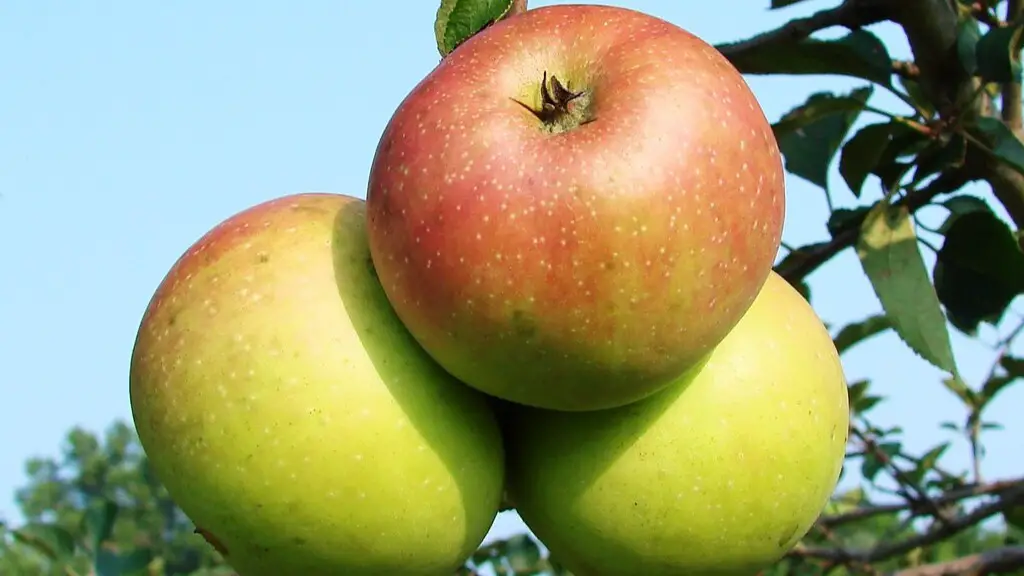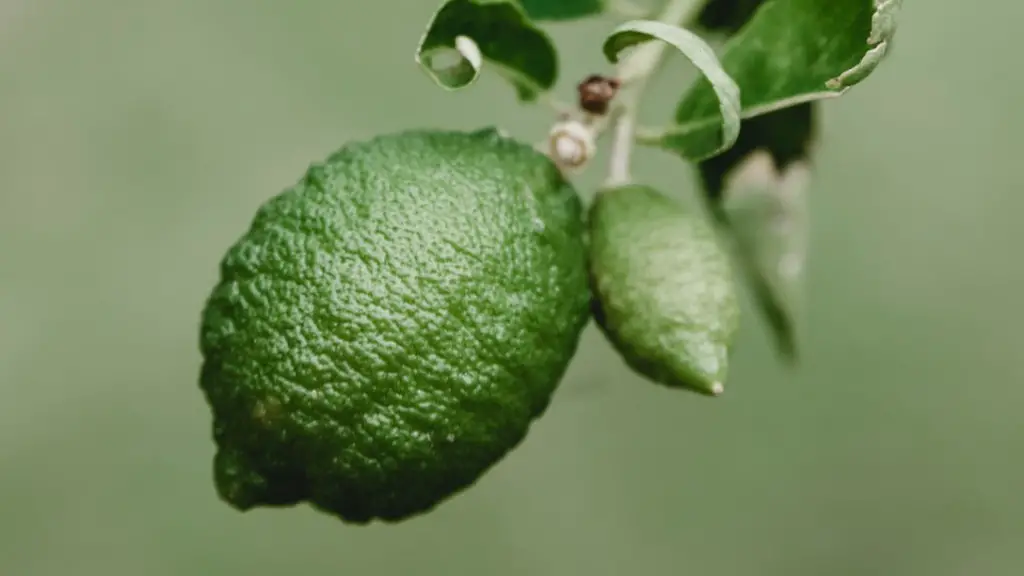The white stuff on apple trees is an issue that many apple growers face regularly. It is usually caused by a disease that can affect the growth and health of the tree and the fruit it produces. This disease is called powdery mildew and is caused by a fungus. This fungus can spread quickly, so it is important to take action quickly. Powdery mildew is primarily a cosmetic issue, but over time it can cause weakened branches, reduced fruit production, and increased susceptibility to other diseases. Identifying and treating the disease quickly can help prevent further damage.
In order to determine whether the white stuff on apple trees is powdery mildew, it is important to inspect the area for signs of the fungus. Powdery mildew generally appears as a white, powdery layer on leaves and branches. This layer can also be grey or brownish in colour. As the disease progresses, the affected areas may become yellow, distorted, or even fall off the tree. When the weather is humid, the affected areas may even become slimy with the growth of spores.
The best way to combat powdery mildew is to reduce the amount of moisture on the apple tree as much as possible. This can be done by providing adequate spacing between trees, proper fertilization and watering, and proper pruning to allow light and air to circulate. Applying a fungicide may also be necessary in the case of a severe infection. In short, reducing moisture and increasing air circulation will help prevent the spread of the disease and protect the health of the tree.
In general, if the white stuff on apple trees is powdery mildew, it is important to take action quickly as the disease can spread quickly. Identifying the signs of the disease and reducing moisture levels in the area can help prevent further damage and minimize the impact of the fungus on the tree and its fruit. With some preventative steps and quick action, apple trees can be kept healthy and producing.
Fighting Powdery Mildew in Apple Trees
Powdery mildew can be a challenging issue for apple tree growers, but with the right strategies, it can be managed. One of the key methods of combating powdery mildew is to reduce moisture levels on the tree as much as possible. Adequate spacing between trees, proper fertilization and watering, and proper pruning to allow light and air to circulate can all help reduce the amount of moisture on the tree and in turn, reduce the conditions that are conducive to powdery mildew growth.
In addition, applying a fungicide can help fight powdery mildew, particularly in the case of a severe infection. However, fungicides can have unintended side effects, so it is important to choose one that is suitable for apple tree use and to apply it carefully. Furthermore, fungicides should be used only if all other strategies have been unsuccessful in controlling the powdery mildew.
Finally, prevention is the best strategy for protecting apple trees from powdery mildew. Planting resistant apple tree varieties and providing adequate maintenance, such as proper fertilization and pruning, can help reduce the risk of powdery mildew affecting the tree in the first place. Taking these preventative steps can help ensure that apple trees are able to remain healthy throughout the growing season.
Preventative Care of Apple Trees
Preventative care plays an important role in protecting apple trees from a number of issues, including powdery mildew. Planting resistant apple tree varieties can help reduce the risk of the fungus developing on the tree, as can proper maintenance, including fertilization and pruning. By providing adequate care to apple trees, the conditions that are conducive to powdery mildew growth can be avoided.
Adequate spacing between apple trees can also help prevent powdery mildew. Proper spacing helps to reduce the amount of moisture on the tree, which in turn reduces the conditions that are conducive to powdery mildew growth. Furthermore, proper fertilization provides essential nutrients for the tree that can help it resist disease and remain healthy.
Finally, providing adequate pruning can also help reduce the risk of powdery mildew developing on an apple tree. Pruning helps to open up the tree’s branches and leaves, allowing light and air to circulate and reducing the amount of moisture. Pruning also helps to remove old, dead, or weak branches that may be more susceptible to disease.
Identifying Powdery Mildew on Apple Trees
In order to determine whether the white stuff on apple trees is powdery mildew, the area should be inspected for signs of the fungus. Powdery mildew generally appears as a white, powdery layer on leaves and branches, although this layer can also be grey or brown in colour. As the disease progresses, the affected areas may become yellow, distorted, or even fall off the tree. When the weather is humid, the affected areas may also become slimy with the growth of spores.
If powdery mildew is suspected, it is important to take steps to identify it right away, as the disease can spread quickly. Taking a sample of the affected area and sending it to a diagnostic laboratory can help confirm the presence of powdery mildew. Knowing what type of powdery mildew is present can also be beneficial, as some types are more resistant to treatment than others.
Furthermore, if the powdery mildew has already spread to a large area, it may be helpful to have it assessed by an arborist or another qualified professional. An experienced professional can determine the best course of action for combating the infection and help protect the tree from further damage.
The Role of Fungicides in Controlling Powdery Mildew
Applying fungicides can play a role in controlling powdery mildew if all other strategies have been unsuccessful in controlling the fungus. Fungicides can help to reduce the population of the fungus, allowing the tree to recover and continue to produce healthy fruit. However, fungicides can have unintended side effects, so it is important to choose one that is suitable for apple tree use and to apply it carefully.
In addition, fungicides should only ever be used as a last resort. More effective strategies, such as reducing moisture levels, increasing air circulation, and providing adequate preventative care should be employed first. This can help to prevent the spread of the disease and minimize the need for the use of fungicides.
Finally, it is important to remember that fungicides are not a cure-all for powdery mildew. Treatments such as fungicides may need to be repeated if the disease is severe and not fully eliminated. Furthermore, proper maintenance of the tree will be necessary to prevent the disease from re-emerging.


